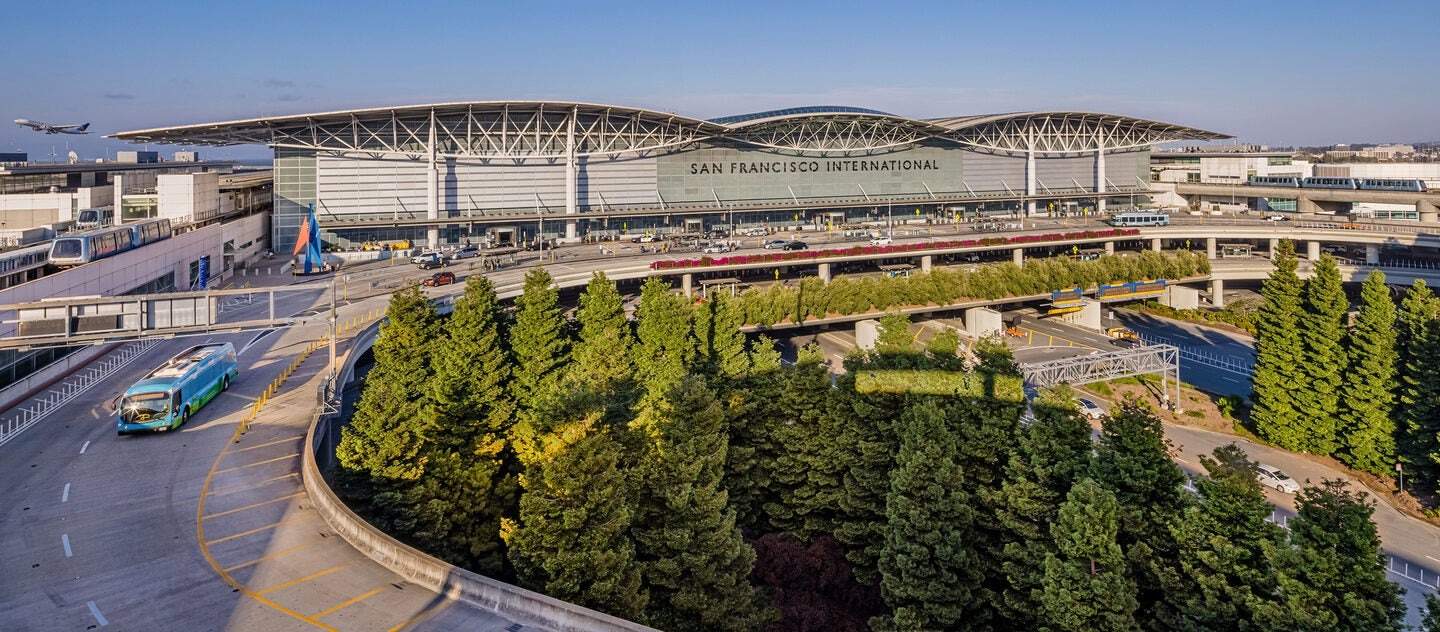In airports across America, the dining experience typically arrives with a side of auditory chaos—a constant soundtrack of gate changes, final boarding calls, and the dreaded paging of passengers who’ve wandered too far from their gates. But at San Francisco International Airport, something different is happening. The airport’s “Quiet Policy,” implemented in 2018, has reduced unnecessary noise by 40%, according to SFO’s official statements—American Airlines has launched a free Wi-Fi trial on select domestic routes, a move that reflects broader changes in how travelers interact with airport dining options and even Wi-Fi usage itself.
The Unexpected Gastronomy Laboratory
SFO’s terminals offer something many travelers find surprising: restaurants where conversation flows with fewer interruptions than at typical airports. This represents a notable shift in the airport dining experience.
Terminal 2 features several dining establishments, including Napa Farms Market, where travelers can find California wines and artisanal cheeses. The calmer environment may be changing how people engage with these offerings, though specific data on customer behavior changes remains limited.
The dining establishments at SFO operate within this quieter environment, which marks a departure from the typical airport experience where announcements regularly punctuate meals. While no official studies have measured the impact on dining habits, the atmosphere appears noticeably different to many travelers, according to social media posts and travel forum discussions about SFO.
The Social Dining Experience
The transformation potentially extends beyond taste to the social dimension of dining. Airport meals—often consumed with the hurried resignation of someone expecting interruption—might unfold differently in a quieter setting.
Various dining options exist throughout SFO’s terminals, including Mustards Grill, where business travelers and families alike can be found. While specific sales data isn’t publicly available, the overall ambiance represents a different approach to airport hospitality than most American travelers have come to expect.
(You know how sometimes the environment completely changes your perception of a meal? Airport dining has traditionally ranked somewhere between gas station sushi and hospital cafeteria fare on the culinary anticipation scale. Yet SFO seems to be attempting something different—prioritizing atmosphere as part of the travel experience.)
The Accessibility Consideration
This dining transformation isn’t universally celebrated. Concerns about accessibility have been raised in discussions about SFO’s quiet policy, particularly for travelers with visual impairments or limited smartphone access.
Travel forums and accessibility advocates have noted the potential challenges faced by some travelers in an environment that relies heavily on visual information rather than audio announcements. The tension mirrors broader questions in contemporary travel—how to balance enhanced atmosphere with practical information needs.
Some airports globally have implemented designated quiet areas rather than airport-wide policies. These zones create spaces with reduced noise while maintaining announcement systems elsewhere, potentially offering a middle path that SFO might consider in future policy refinements.
The Future of Travel Dining
As travelers increasingly seek quality experiences, SFO’s experiment hints at possible changes in how airports approach dining environments. The quiet policy creates conditions where airport restaurants operate in a notably different acoustic environment than most of their counterparts nationally.
Whether this approach to airport design and operation will spread to other facilities remains to be seen. Industry publications and travel websites continue to monitor traveler responses to the initiative, with mixed reviews appearing on platforms from TripAdvisor to Twitter.
For travelers passing through SFO, the official guidance is clear: arrive prepared with digital notifications set up on your devices. The airport’s website and app provide real-time flight information, allowing visitors to enjoy what might be one of America’s more distinctive airport dining experiences—for better or worse, depending on whom you ask.


















